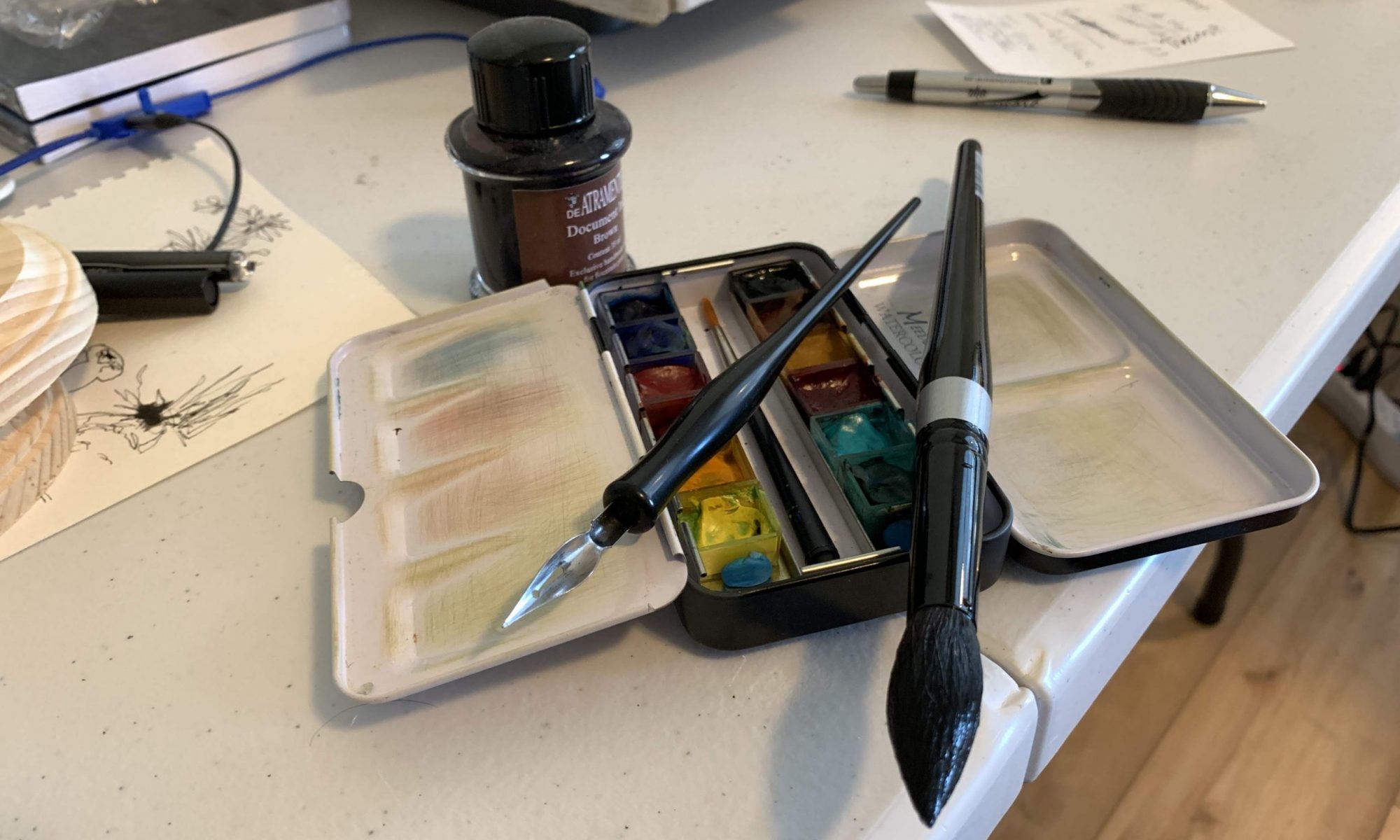
I’m not sure how many of my readers have thought about scratching that itch to draw or paint…I hope it’s all of you because I KNOW everyone can if they’re willing to put in some practice. So I thought this month I’d spend a bit of time talking about some of the tools of the trade when it comes to drawing and painting with watercolor.
Most of us have taken a ballpoint pen or a #2 pencil and doodled on a piece of paper. In fact I can probably safely assume that most of us doodled in the margins of our books and papers in school. That’s how it begins. Seeing the magic we can make with a pencil and a Bic pen gives us the encouragement to go a little deeper.

I’m sure, like me, you’ve seen some masterful pictures drawn with nothing more than an Bic pen or a Ticonderoga pencil. I am constantly amazed at how artists around the world with little to now access to “professional” artist materials can produce amazing works of art.
I’ve seen ballpoint pen and pencil art on butcher paper, brown paper bags, lined notebook paper—you name it. At times I can only wonder what these artists could do with high-grade materials.
When I think of the tools of the trade in my art, I think of the difference between Harbor Freight and Craftsman tools. Harbor Freight has good tools at killer prices whereas Craftsman tools are legendary for their reliability and, of course, the lifetime warranty.
Looking at the tools of the trade I use let’s talk about the main three when it comes to watercolor painting:
1. Paper
2. Paint
3. Brushes
This month let’s begin with the painting surface. While we say we paint on paper, the highest quality of watercolor paper is really 100% cotton. As the amount of cotton is reduced the quality of the paper is reduced as well.
Watercolor paper comes in different “weights” from about 90 lbs to 300 lbs weights where the higher the number, the more water can be added to the paper and subsequently, the longer the paper will hold the water for a painting session. Heavier paper will also buckle less than lighter weight paper; once the water dries it remains flatter.
Ninety pound paper is generally referred to as student-grade paper and is usually either all true paper or a combination of paper and cotton. It is called student grade because it is much less expensive than quality paper and as students we’ll go through a lot of paper learning the mind of watercolor (hat tip to Steve Mitchell).

Most professional watercolor paintings will be painted on either 140 lbs or 300 lbs paper. These papers will also come in different textures, degrees of “whiteness”, and either be cold pressed or warm pressed.
Texture is sometimes referred to as “tooth”. Texture is important in the paper as it also adds texture to painting. An artist who wants to paint a botanical painting of a flower, for example will want less tooth in order to show the delicacy of the flower. A rougher texture is better for landscapes and urban paintings where the artist wants to show the texture of a forest, grass, or a building.
Warm pressed paper then is used for botanical paintings and such as it has a smoother texture whereas cold press paper has a roughper texture.
As to the whiteness of the paper, that is a decision the artist needs to make as they plan their painting. A winter snow scene may call for a striking bold white snow, or a more subdued snow based upon the atmospherics and message the artist is trying to give.
Paper can come in a variety of sizes and shapes. Paper can come on a pad, a block, single sheets, and even rolls.
Like any master craftsman, the watercolorist has a number of tools at her disposal to convey the feeling of their art. Watercolor paper is one that can truly make a difference based upon the size, texture, weight, and whiteness of the paper. Choosing just the right tool for the job is what sets a master apart from the apprentice.
In my next post I’ll talk about watercolor paints. In the mean time…go make some art!
